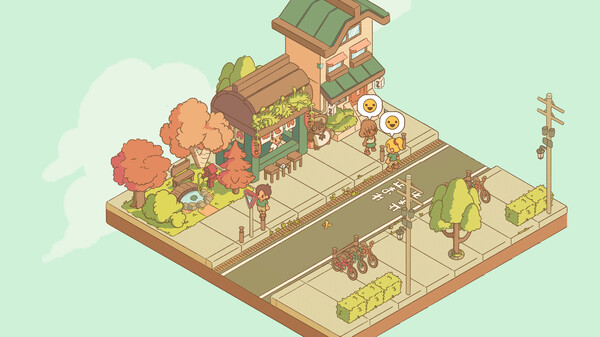Regardless of genre, if there's a sweet critter slapped on the poster of a game, I'm already intrigued and probably checking it out on Steam. Fortunately, Minami Lane managed to pique my interest through the tanuki that guides you, and even though it's a genre I wouldn't usually reach for, I found a new appreciation during my time playing. It usually takes a lot for a management simulator to appeal to me, but this simple yet satisfying game sunk its hooks in, and before I knew it my evening was slipping away.
My experience with management sims usually goes like this: Feeling overwhelmed by all the plates I have to spin before I finally get to grips with what I'm doing after a few hours., But that initial slow-burning phase of having to read a lot of small text and doing a lot of trial and error to get things to work is always a bit frustrating. Minami Lane strips this back and breaks it down into a format that even I find approachable.

You have to manage a single street at a time, and when you start you're given the bare bones—a few buildings like a resident house and a park. When you're ready to get stuck in you're given a list of things to achieve, like building a boba shop or increasing the population of youths by making it more attractive to younger people. This is all spelled out in the tutorial, which is so neatly folded into its gameplay that it doesn't feel like a separate unit, and before long you're left to design streets on your own accord.
The game operates on a.
















